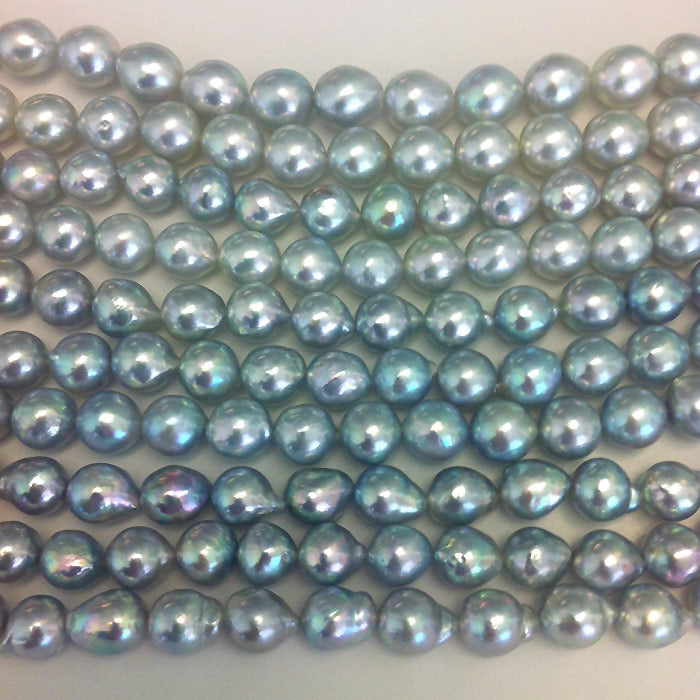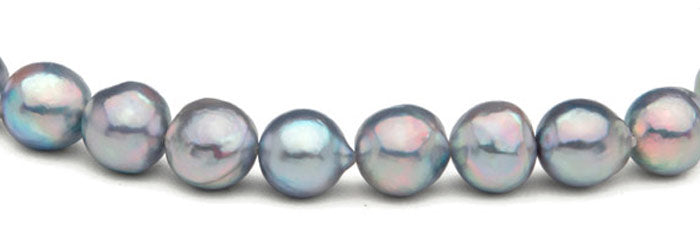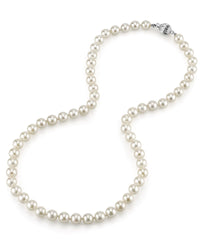Once thought of as rejects, baroque natural color Akoya pearls were typically destroyed or ground up to be used as "medicine". The story goes that Japanese pearl producers didn't want these pearls on the market for fear it would ruin the image of their perfectly round, white Akoya pearls. Today natural color Akoya pearls are becoming more and more popular and we're seeing consumers turning away from the "perfect" white pearl ideal in favor of something more natural.
Based on what we saw at the gem show, natural color baroque Akoya pearls are still an oddity and high quality examples are exceedingly rare. Most producers didn't have any natural color Akoya pearls and the ones that did, for the most part didn't have anything that caught our attention.
The problem we saw with most the baroque Akoya pearls was nacre thickness. With a quick glance you may not notice the thin nacre but several years down the road(if they last that long), you will undoubtedly notice the peeling nacre and white nucleus.
That being said, with a little bit of hunting I was able to find 10 exceptional strands, all with strong blue body color and intense overtones.
 *The deep blue color and intense overtones is a sign of thick nacre.
*The deep blue color and intense overtones is a sign of thick nacre. 
I wish had more information to pass along but it seems the best guess is it's the result of disease or illness in the mollusk. As the popularity grows, we may see enterprising farmers attempt to replicate the conditions and we'll get a better understanding as to what causes the coloration.
On Monday morning I'll be putting up a blog post with a link to a special sale page. The last blog only promotion we did sold out very quickly!




